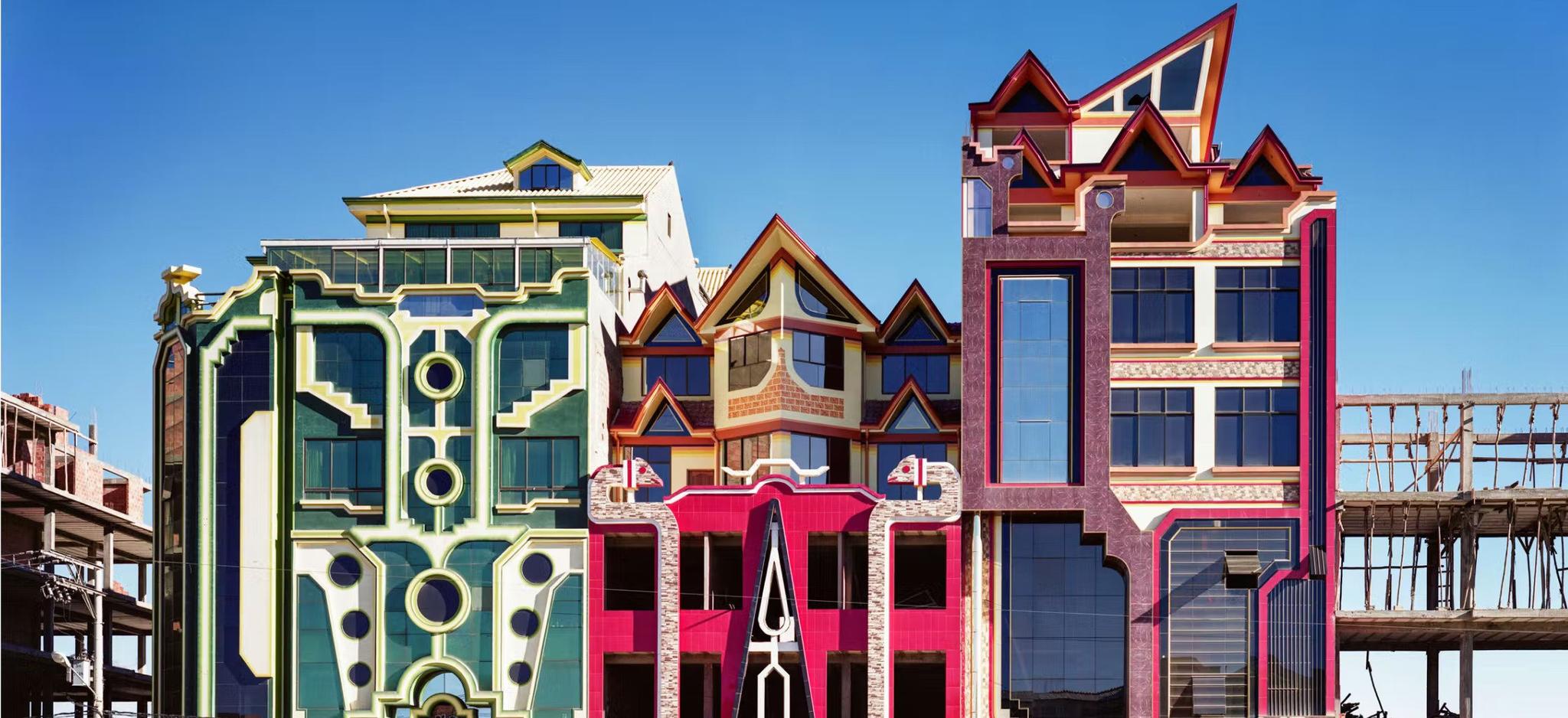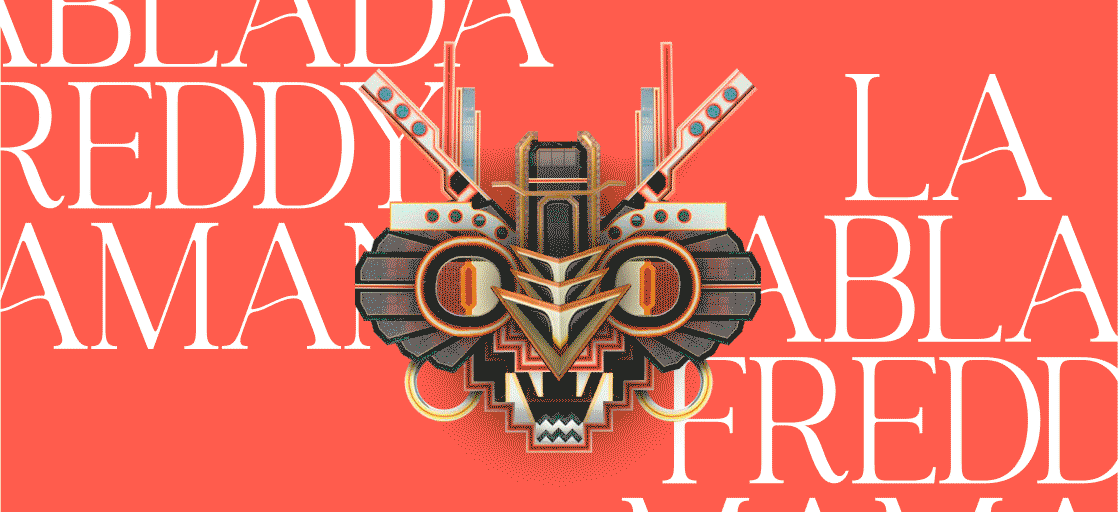Monday, June 30th 2025
Being creative is basically being on a constant search for new ways to push your creative boundaries and when looking for inspiration, explorations and designs, we come across some really interesting and talented characters. These explorations that we do are a really good opportunity for us to use our humble platform to showcase the body of work of latinx artists and designers. This is the case of Bolivian architect Freddy Mamani.

Born in La Paz, Bolivia in 1971, Freddy is an engineer, a construction worker and a self-taught (how cool is that?) architect well-known in the region for his Neo-Andean Architecture or “Transformer Architecture”. A niche name to some, Mamani’s work has already been featured in expositions at the MET and the Cartier Foundation in Paris. Using saturated greens, oranges, blues and fucsias as his main color palette, his work was born in the heights of La Paz at El Alto and every Mamani design pays homage to his origins, and Bolivian culture and folklore as well.

“Just like Gaudí in Barcelona or Niemeyer in Brasilia, Freddy Mamani has the chance of shaping the aesthetic of an entire city”, wrote The Guardian, noticing how Freddy’s hometown is filled with his architecture and his artistic POV. Others call his designs “pure polychromy” in a world that has turned beige, and they’re absolutely right. In his own words, Freddy describes his creations as “Andean Palaces”. You could spend hours looking at these palaces (we actually did… well, at least pictures of them), searching for shapes, faces, figures and even animals, which are often referenced in his buildings. When analyzing Mamani’s work, we couldn’t help to see a resemblance between his structures and another iconic symbol from Bolivian culture: the Diablada masks. The Diablada or ‘Dance of the Devils’, is a Bolivian tradition (dating back to I A.C.) that depicts the fight between good and evil with the dancers using colorful devil masks, with distinctive shapes and eye-striking color palettes. Our creative process was set to continue this inspiration by merging his work with this tradition combining architecture, Latin American folklore and design.
We wanted to pay homage to Freddy while creating something new and fresh at the same time. To achieve this, we combined architecture, Bolivian folklore and graphic design to guide our creative process. Most of our inspiration came from the Diablada masks (our starting point), often seen in the carnivals at the city of Oruro, Bolivia. The result: well, you can see it for yourself.

All images attached to this article are not property of Lorem Ipsum and were crafted by the artists mentioned above.














